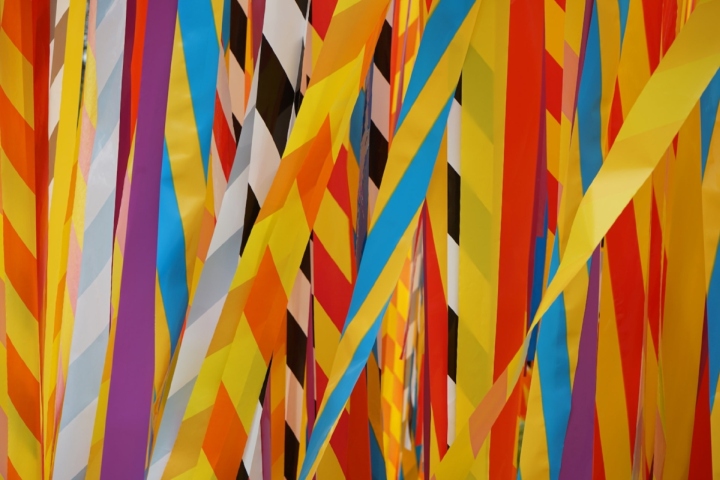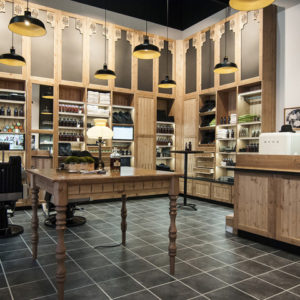


Working with patterns, order, colour and density, this garden is a play on formal traditional gardens with contemporary ready-made means and hyper un-natural materials. The main material forming the installation, barricade tape (barrier tape), is typically used to delineate a perimeter and keep people out of a particular area or zone. Here however it is used precisely to bring visitors into the space and entice them to inhabit it.

The installation creates a fluid space which responds to its environmental conditions and changes dramatically with the intensity of light and wind. Depending on the weather, the space is kinetic and very open or it is calm and forms a permeable but closed volume. The transformation is visual but also auditory, as the sound generated by the movement of the barrier tape ranges from a quiet stir to a vigorous rustle.

The garden is meant to be experienced, explored, and occupied, and for this purpose custom bent steel and fabric lounge chairs are provided. The garden with its canopy of colourful lines is both graphic and playful. As a space it encourages interaction without being prescriptive about use. While adults enjoy the comfort of the loungers and take pleasure in the moment of repose that the garden provides, youngsters use the tape as maze to run through, frolic in and explore.

Drawing on the formal language of historical garden design, and the contemporary means of mass-produced safety and construction materials, ‘Vertical Line Garden’ is a graphic and spatial intervention. The installation introduces man-made elements into the cultivated natural environment of Les Jardins de Métis. Through this juxtaposition of the manufactured and the natural a dialogue is created, based on the shared theme of protection and necessary safeguarding.

This is the fourth iteration of the garden, which in 2014 was one of the winners of the festival’s annual open competition. In 2014 ‘Line Garden’ started as an exploration of a horizontal field condition created through the drawing of parallel lines. The 2015 and 2016 iterations further explored and played with colour and pattern and added vertical canopy elements. The 2017 version is entirely vertical and is the most spatial and engulfing one yet.
Designed by Julia Jamrozik & Coryn Kempster


























